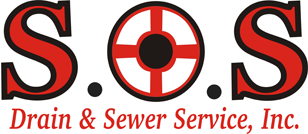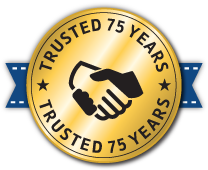While sewage backup isn’t as destructive to your home as a fire or a flood, what you have on your hands is a smelly health hazard. What is coming up through that sewage puddle, well, you really don’t want to know. What you do need to know is that it carries dangerous bacteria, diseases, and contaminates everything it touches. You want it to go away for the smell alone, but it needs to go in order to keep your family healthy.
If you have a sewer backup, DIY cleaning solutions should only be attempted if the area affected is small and contained. Furthermore, cleanup should only be done when the root cause of the backup has been addressed by a professional plumbing service. After your plumbing service has addressed the problem that caused a sewer backup, they may be able to help you handle the cleanup as well.
How to Handle Sewer Backup Cleanup
When your sewer is coming back up the pipes, it seems like a huge unsolvable problem. However, after the problem is fixed, the cleanup is difficult, but possible. It is best to handle cleanup in a step-by-step manner so it is done both quickly and correctly with minimum exposure to the sewage.
- Use Personal Protective Gear — Rubber gloves, rubber boots, eye protection, and face masks are necessary to keep anyone cleaning up the wastewater safe. You want to avoid any exposure to the wastewater as it can carry the risk of serious infections even with just skin contact or inhalation of particles.
- Keep the Door Closed — Once the cleanup has begun, the crew cleaning it up will want to leave the area as little as possible to prevent sewage tracking and contact contamination. You want to keep the door closed to not just keep it in, but to prevent the spread of airborne particles as well.
- Remove the Water — This is often where one will need professional intervention. If your sewage backup has a lot of standing water, you will need a pump or at least a wet-vac with the proper filtration device to remove as much moisture as possible.
- Removing Debris — Once the standing water is gone, the debris and dirt will be shoveled into plastic bags and safely disposed of.
- Discard Contaminated Items — Anything you cannot easily disinfect will need to go. Your flooring and counters will be fine, though not likely without water damage. However, you will want to remove any food or drink exposed in the area as well as items like mattresses, rugs, curtains, clothes, or books. Anything that can absorb contaminants needs to go.
- Sanitize and Dry — You want to both sanitize the area and dry it as soon as possible to quell any potential mold growth. You want to wipe down anything that you are not throwing out with bleach or other disinfectants. Even areas not touched by the wastewater will want to be disinfected to ensure there was no airborne contamination.
As this is a lot of work, it is often something that homeowners want to leave to professionals. While many plumbers offer sewage cleanup services, if your plumber does not, they can direct you to reputable recommendations at very least. If you are worried about contamination, then no matter the size of the backup, you will want to be sure that it is professionally sanitized.
Do you have sewage backup? Do you have any other plumbing problems that need professional intervention? We can help you get any plumbing problem repaired and cleaned up quickly. Contact us today to see what the professionals at SOS Drain & Sewer can do to come to your rescue.



